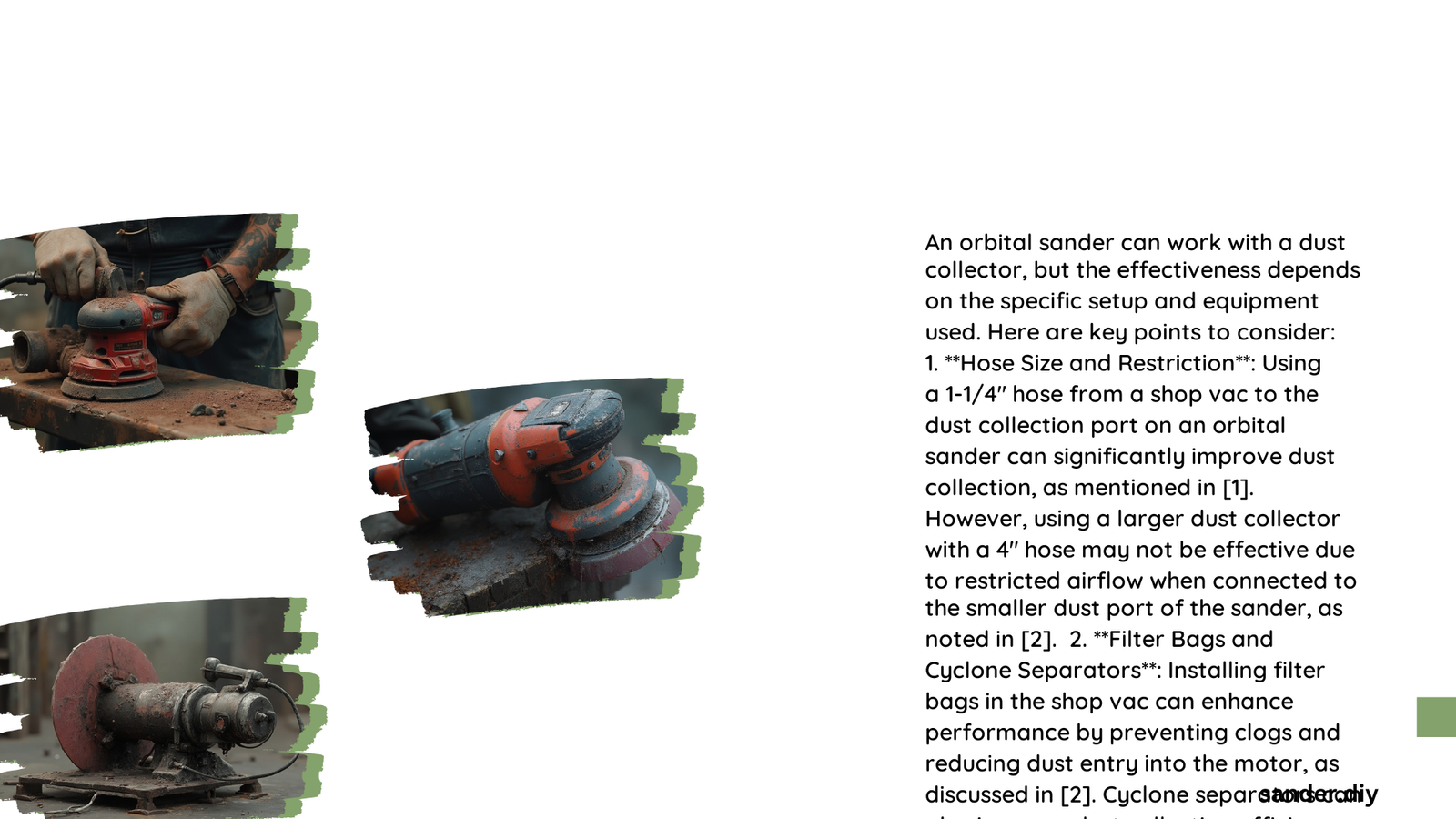Orbital sanders can effectively work with dust collectors, but success depends on specific compatibility factors like airflow requirements, suction power, and proper connection adapters. Workshop professionals and DIY enthusiasts need to understand the nuanced relationship between orbital sanders and dust collection systems to ensure optimal performance, dust management, and tool longevity.
What Makes Orbital Sanders Compatible with Dust Collectors?
Orbital sanders require precise dust collection strategies to function efficiently. The key compatibility factors include:
Airflow and Suction Dynamics
| Dust Collector Type | Airflow Characteristics | Sander Compatibility |
|---|---|---|
| Large Workshop Dust Collector | High Volume | Limited Effectiveness |
| Portable Shop Vac | Moderate, Focused Airflow | Excellent Compatibility |
| Dedicated Dust Extractor | Precise Suction | Optimal Performance |
Hose Connection Requirements
Orbital sanders typically require specific hose connection parameters:
- Standard Hose Diameter: 1-1/4 inches
- Connection Type: Threaded or Quick-Connect Adapters
- Recommended Vacuum Pressure: 80-120 CFM
How Do Different Orbital Sanders Connect to Dust Collectors?

Brand-Specific Dust Collection Features
- 3M Xtract™ Pneumatic Sander
- Rear threaded 1″ external vacuum hose attachment
- Designed for direct dust extractor connection
-
Optimized for precision dust management
-
Bosch ROS65VC Sander
- Integrated dust collection adapter
- Compatible with multiple dust extraction systems
- Enhanced onboard dust management
What Equipment Enhances Dust Collection Performance?
Recommended Accessories
- HEPA filter bags
- Flexible vacuum hoses
- Quick-connect dust port adapters
- Inline dust separators
Critical Considerations for Effective Dust Extraction
Workshop professionals should evaluate:
- Suction Power: Ensure sufficient airflow for effective dust removal
- Filter Efficiency: Use high-quality HEPA filters
- Noise Levels: Select quieter dust extraction systems (80-90 dB range)
- Hose Compatibility: Match hose diameter to sander’s dust port
Practical Tips for Optimal Dust Collection
- Always use manufacturer-recommended adapters
- Regularly clean and maintain dust collection systems
- Check hose connections for secure fit
- Monitor filter condition and replace when necessary
Common Challenges and Solutions
| Challenge | Solution |
|---|---|
| Reduced Airflow | Use smaller, focused dust extractors |
| Inconsistent Dust Removal | Verify hose connections and adapter fit |
| Excessive Noise | Select low-decibel dust collection systems |
Final Recommendations
Orbital sanders can work effectively with dust collectors by:
– Choosing appropriate dust extraction equipment
– Using correct adapters and connections
– Maintaining consistent airflow
– Selecting compatible hose sizes
Pro Tip: Invest in a dedicated shop vac or portable dust extractor specifically designed for smaller power tools like orbital sanders.
References:
1. [3M Xtract™ Pneumatic Random Orbital Sander Documentation]
2. [Woodworking Tool Dust Collection Guide]
3. [Professional Workshop Dust Management Strategies]
